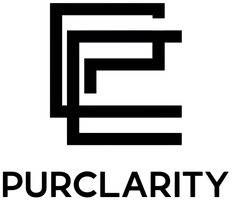Why You Keep Breaking Out in Certain Spots on Your Face

Acne can be frustrating, relentless, and unsightly. For some people with acne-prone skin, breakouts can be constant, while for others, the breakouts are random. The only thing more annoying than acne is not knowing why you keep having breakouts.
Constant breakouts cause unsightly, itchy, and painful pus-filled pimples that most people are tempted to pop. Typically, your proneness to acne can be caused by several factors, but to mitigate the problem, you'll need to employ a few changes to your daily skincare routine and lifestyle.
There is a relatively simple explanation for the consistent stream of pimples on certain spots on your face. Continue reading to learn more about where acne occurs on the face and how to get rid of it.
What is Acne?
Acne is one of the most common variant of skin conditions. Acne usually appears when the pores on your face are clogged by hair, bacteria, dead skin cells, and sebum.
If you struggle with acne breakouts, you are not the only one. It has been estimated that up to 80% of people between ages 11-30 develop a mild to moderate form of acne. People who manage to get through puberty with no acne are more likely to develop it as they get older, which can be even more frustrating.
What Are the Common Causes of Acne?
Acne is typically a hormonal skin condition triggered by androgen hormones that become active in your teen and young adult years. Sensitivity to androgen hormones, combined with excess sebum production and bacteria on the skin's surface, can lead to acne breakouts. A couple of things can cause acne or make them more severe:
- Genetics
- Stress increases the body's cortisol levels, causing flare-ups
- Air pollution and weather conditions such as high humidity
- Specific medications
- Tight and itchy clothing and headgear
- Fluctuating hormone levels in girls and women
- Oily or greasy skincare products such as waxes, heavy lotions, and creams
- Picking at acne sores
What Are the Different Kinds of Acne?
Despite the cause, acne usually takes the following forms:
- Cysts: Pus-filled bumps that often cause scarring
- Whiteheads: Pimples that remain sealed with dead skin and oil
- Blackheads: Dark-colored pimples on the skin that are filled with excess dead skin and oil
- Nodules: Solid bumps on the skin that usually run deep into the skin, large and impossibly painful
- Pustules: Bumps filled with pus that look similar to whiteheads with red rings that easily scar when scratched or picked at
- Papules: Small, red pimples that become inflamed
- Fungal (Pityrosporum Folliculitis) Acne: This acne variant usually occurs when the hair follicles produce excess yeast. These pimples typically become inflamed and itchy
Why You Keep Developing Acne on Certain Spots on Your Face
-
On the Forehead
Pimples on your forehead usually appear on the T-zone of your face. The T-zone is the T-shaped area across the skin of your forehead and down your nose. This area is a prime location for whiteheads and blackheads.
This area tends to have more sebaceous glands than most parts of the face, making it more susceptible to breakouts. To get rid of T-zone acne, you should try:
- Salicylic Acid: Salicylic acid is an ingredient in most over-the-counter products. It helps clear out pores and break up dead skin cells
- Retinoids: Retinoids are proven to be quite effective in fighting acne. Although they can be utilized as short-term spot treatments, they work better when used for long-term skin care and maintenance. Topical retinoid lotions and creams are available over-the-counter and can also be prescribed
- Hypochlorous Acid: Hypochlorous acid occurs naturally in the skin and is used to fight bacterial infections, speed up the skin's natural healing process and protect the skin from harmful pathogens. Using PurClarity's Revitalizing Mist will help kill acne-causing bacteria and moisturize your skin, reducing sebum production and therefore preventing breakouts
- Benzoyl Peroxide: This is an easy-to-find ingredient in most over-the-counter acne creams. It helps clear blockages from clogged pores. However, it can react negatively when mixed with other acne treatments, so it would be better not to combine it with other products before consulting your doctor
- Skin-Friendly Hair Products: In most cases, the appearance of pimples along your hairline is caused by your mousse or favourite dry shampoo. Most hair products are waxy and build up along your hairline line, causing flare-ups. If you suspect your hair products might be causing your breakouts, you might want to switch to a more skin-friendly product, as it is challenging to steer clear of your scalp and hairline when using hair products
-
On the Chin and Jawline
The chin and jawline are pretty sensitive to an increase in hormones. Girls and women have breakouts on their chin when their hormones fluctuate during their menstrual cycles. Teen boys are more susceptible to breakouts along their jawlines during growth spurts.
Unlike T-zone pimples, acne that manifests along the jawline and on the chin is often bigger, deeper and more inflamed. To treat them, you can try:
- Hypochlorous Acid: Since hypochlorous acid occurs in the skin naturally and is used to heal and repair the skin, using hypochlorous acid products such as PurClarity's Revitalizing Mist can help trigger and speed up this action
- Hormonal Medication: For women, taking hormonal medication such as birth control pills can help control acne. However, some types of hormonal birth control medication can worsen the breakouts rather than control them, so it's best to consult with your doctor before using any hormonal medication
- Retinoids: Retinoids are also effective in warding off hormonal acne
- Sulfur: Topical skin care products that contain sulfur can effectively alleviate inflammation of deep acne. Fortunately, sulfur-infused topical skincare products are available in prescription varieties and over-the-counter
-
On the Cheeks
Unlike breakouts on the T-zone and jawline, breakouts on your cheek don't reveal anything about the underlying cause. It can be anything from genetics, stress, and diet to skin care products.
When treating pimples in this area, it is crucial to remember that the skin on your cheeks is easily irritable and dry compared to other parts of the face. To treat pimples on your cheeks without making them more severe, you should use retinoids, salicylic acid, benzoyl products and topical, hypochlorous acid products such as PurClarity's Revitalizing Mist.
What is the Best Way to Get Rid of Acne on Your Face?
Despite the type of acne or where they develop on your face, you can get rid of them with these general, routine skin care tips:
- Using Foaming Cleansers: Unlike lotion cleansers, foaming cleansers are more effective in reducing oil and removing dirt from the skin
- Washing Makeup Application Tools: When used repeatedly, makeup application tools collect oils and bacteria, which can clog your pores. Shampooing them with gentle, fragrance-free shampoo at least once a week can help get rid of accumulated grease, dirt and bacteria
- Exfoliation: Exfoliating is essential since it helps eliminate dead skin cells, but it must be done carefully. Scrubbing too aggressively irritates the skin, which can worsen the condition
- Moisturizing: When your skin is dry, it creates excess sebum to hydrate itself, which puts you at risk of developing clogged pores. PurClarity's Revitalizing Mist is an effective moisturizing product that helps ward off acne
Adopt a Better Skincare Routine Today!
Even though acne is not directly linked to poor skin hygiene or lack of a skincare routine,practising good skin care can go a long way in preventing it. Adopt a skincare routine that helps hydrate, heal, and protect your skin. For severe breakouts, consult your doctor.









